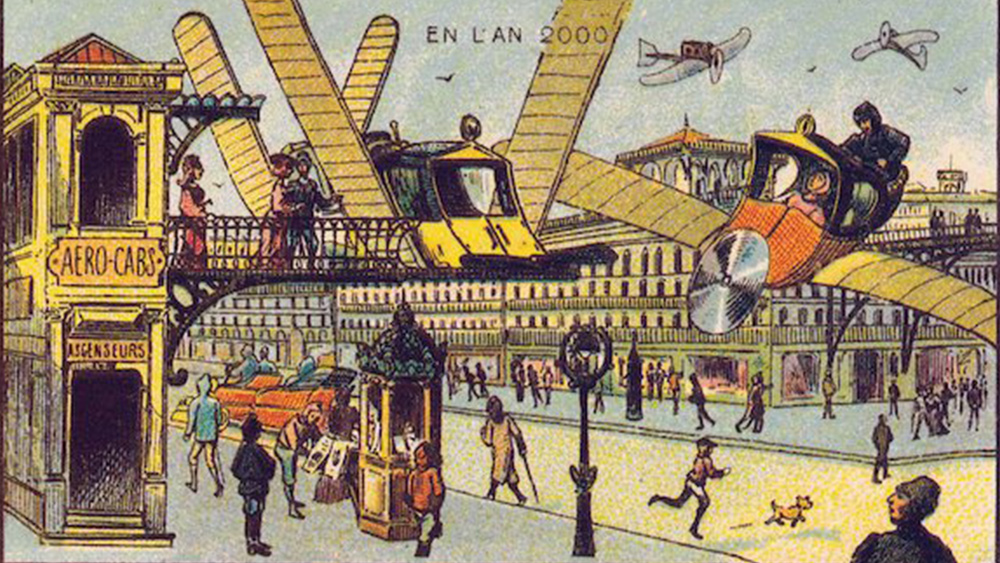
The year 2000 seemed a long way away for artists in the early 1900s. In fact, it still seemed a long way away when Back to the Future II came out in 1989. Now over two decades into the 21st century, it's fascinating to see what artists 100 years ago thought our world would look like – and to consider how accurate they were.
The En L'An 2000 (In the year 2000) series of paintings created by French artists including Jean-Marc Côté is a striking example. Originally intended for inclusion in cigarette and cigar boxes, the illustrations were made between 1899 and 1910. Full of mechanised devices, flying contraptions and some – er – curious relationships with marine life, they offer an intriguing, and sometimes hilarious, glimpse at how artists imagined the future. But just how many of their predictions have come true? (If you're looking for more artistic inspiration, see our guide to the best online art galleries).
01. Robot cleaners and other mod cons
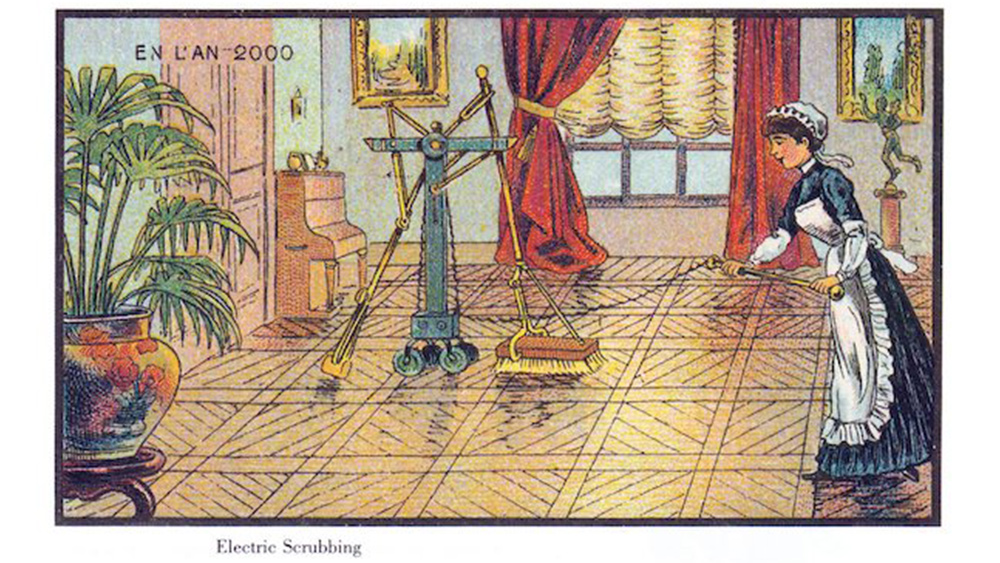
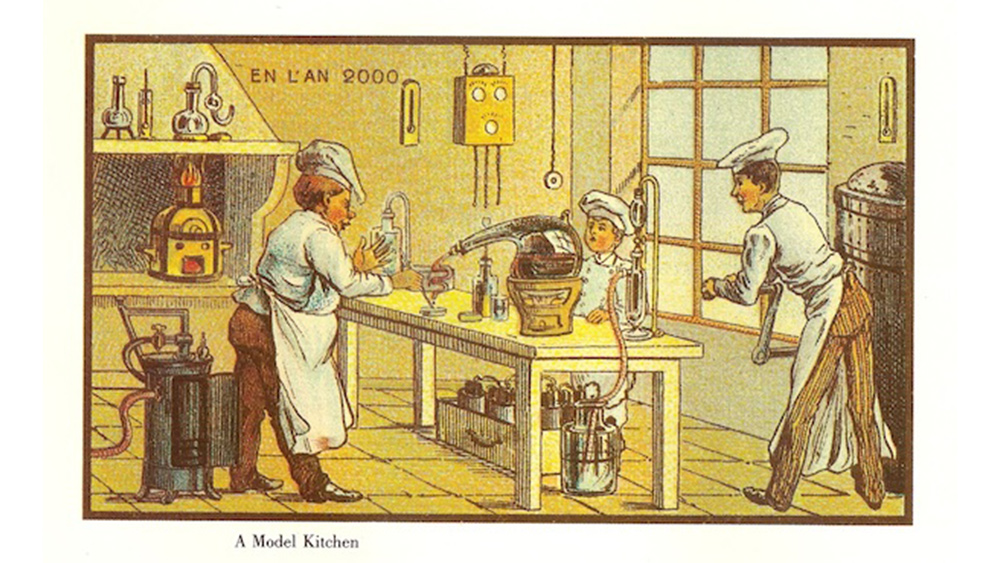
One thing Côté and other artists foresaw with a degree of accuracy was our reliance on gadgets, including household appliances. The 'electric scrubbing machine' they imagined could have served as inspiration for today's robot vacuum cleaners, while elaborate kitchen devices seem to presage modern molecular gastronomy – or our obsession with achieving the perfect cup of coffee. The artists just didn't foresee that our appliances would be a lot less cumbersome and wouldn't need to be pulled on a chain or cranked by hand – try stowing that electric scrubbing machine under the stairs!
02. Communication
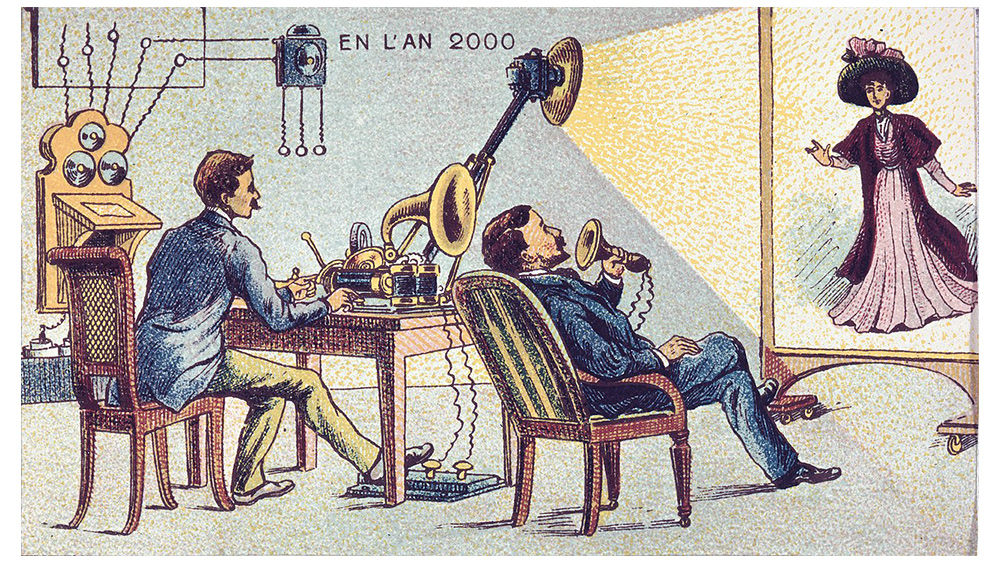
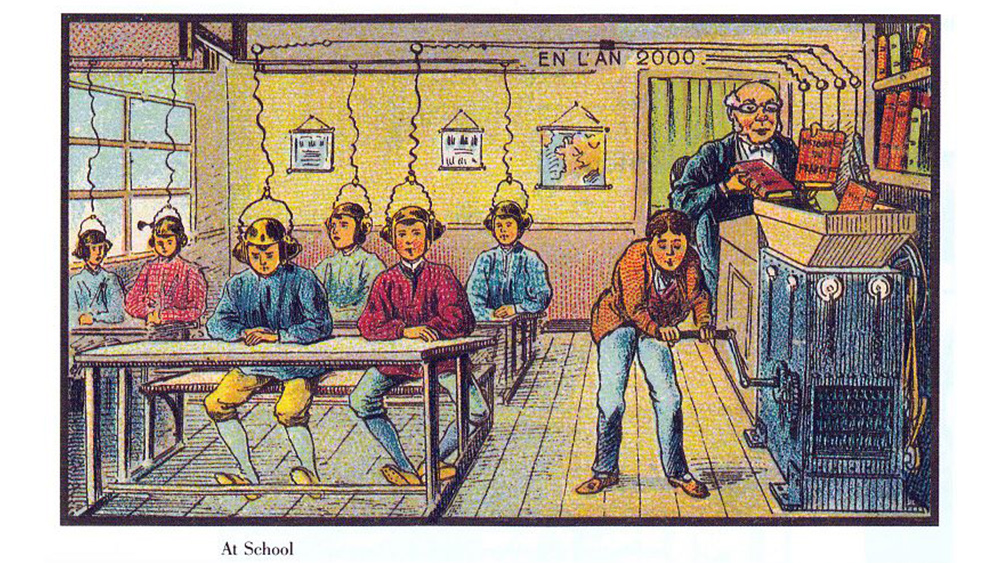
While the first image above is titled "La radio à la maison," we think it looks like what's happening here is actually more of a video call, since the gentleman watching the screen seems to have a mouthpiece and an earpiece. Did the artist predict we'd be spending our lives in Zoom meetings? Meanwhile, "La radio à la école" at first glance looks not unlike a secondary school language lab from well before the year 2000 but appears to depict a method of creating audiobooks by feeding physical texts into an enormous meat grinder.
03. Personal transportation
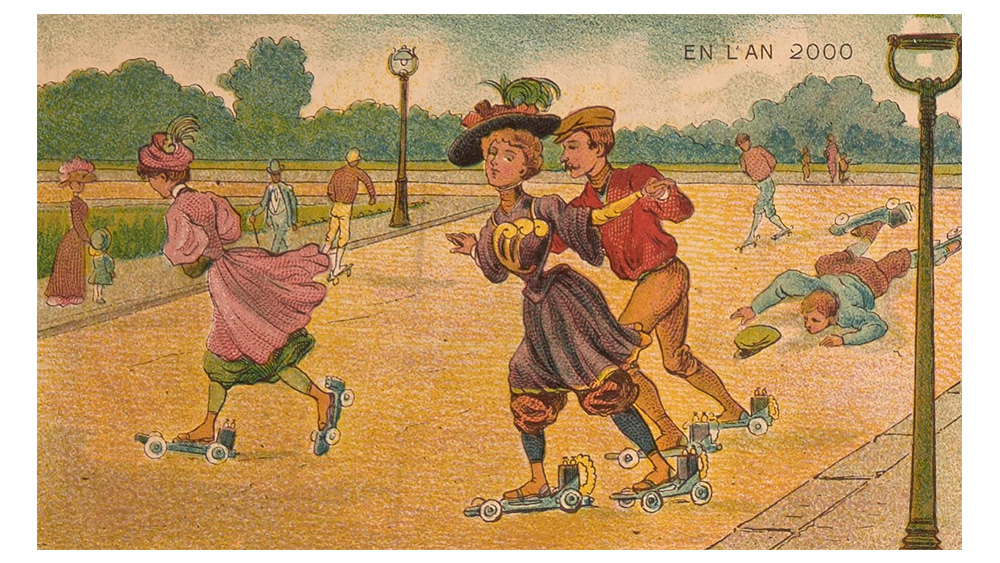
Moving outside, we'd say this painting was fairly prescient considering the number of electric scooters darting around the streets of Paris today. The artists imagined skates rather than scooters, and with the purpose of recreation rather than commuting, but the battery-powered contraptions seem to be just as perilous.
04. Intensive farming
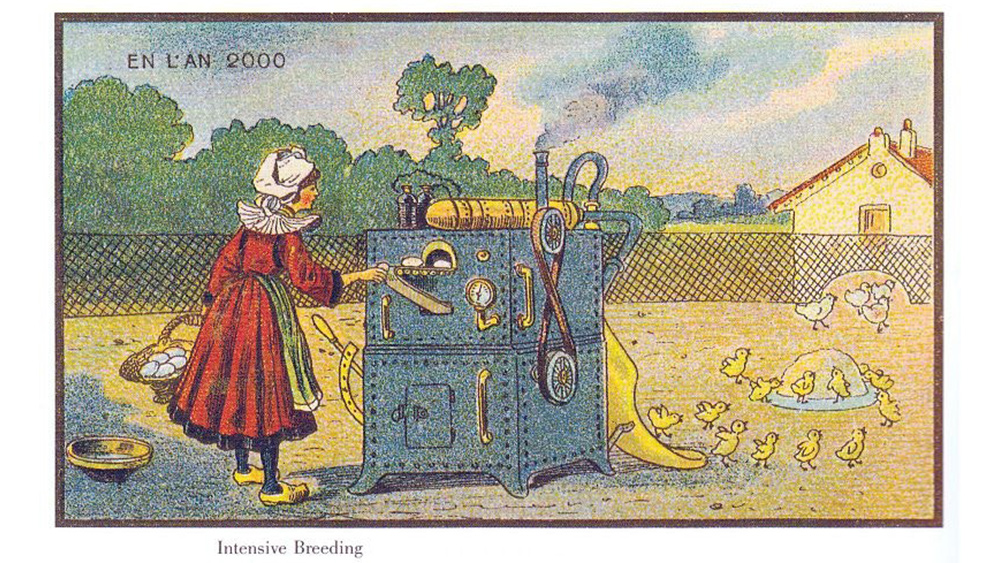
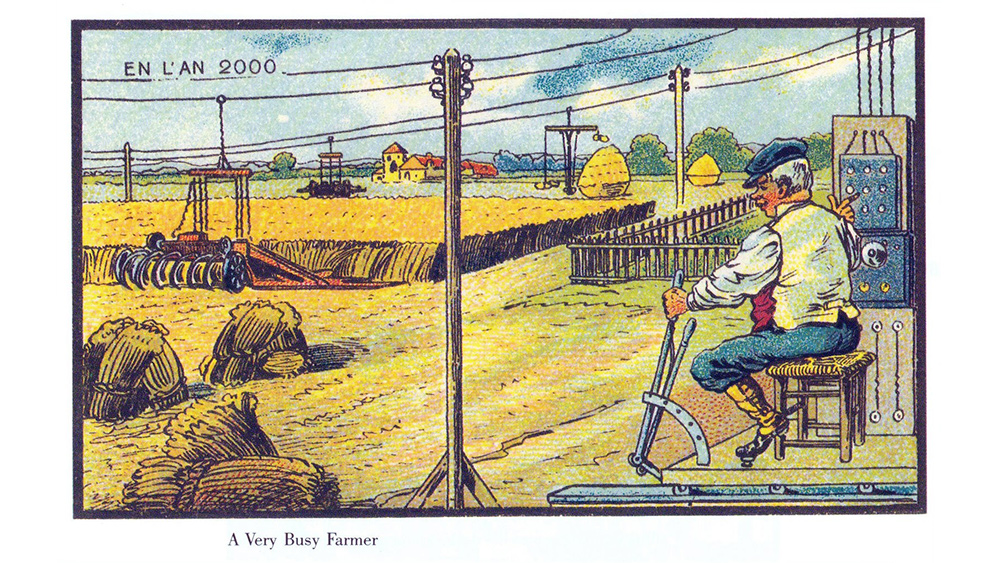
The artists of the 1900s also seemed to foresee the direction that agriculture and farming were heading, with increased automation and other developments to produce higher yields. A machine for the 'intensive breeding' of chickens seems an uncanny presentiment of battery farmed hens, although the chicks seem to be fairly free to wander. That said, we're not sure that farmers today have it quite so easy as the man in the second image above.
05. Flying vehicles
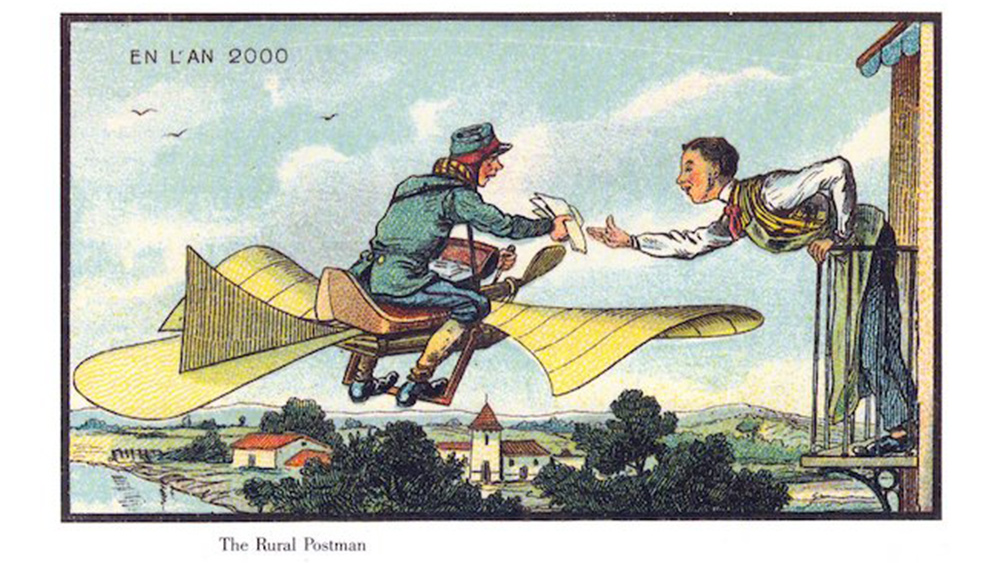
For centuries, our visions of the future have involved flying, and here the predictions of artists from fin de siècle France were not so removed from those of more recent filmmakers: flying vehicles and all manner of other devices to make us airborne. They come in all forms, from wings for firemen to flying taxis and postmen. However, the artists seem to have been unable to imagine, or at least to illustrate, technology beyond that available at the time since the contraptions are invariably powered by propellers or wings.
Get the Creative Bloq Newsletter
Daily design news, reviews, how-tos and more, as picked by the editors.
06. Underwater transportation
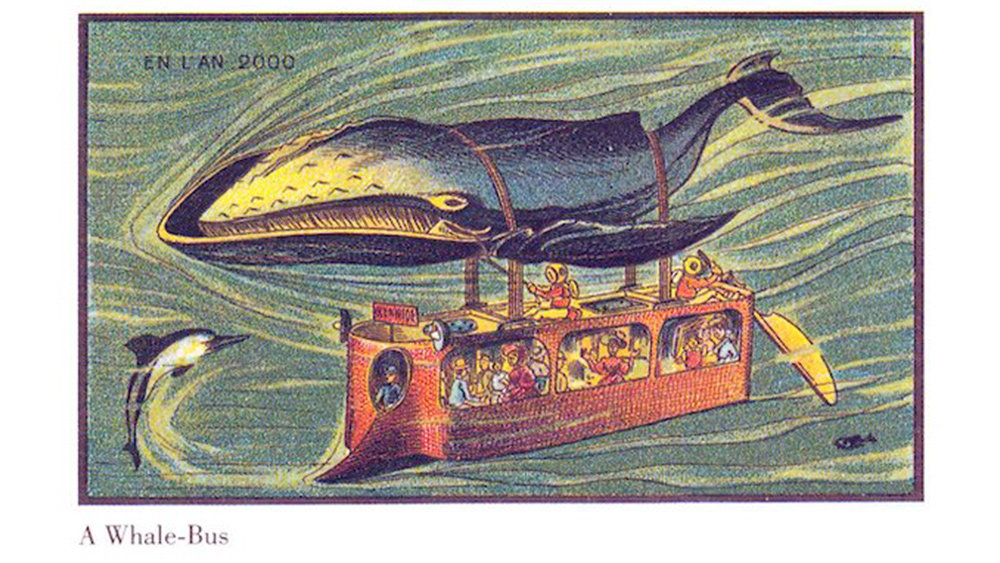
In the early 1900s mankind wasn't so far away from entering into space, but, perhaps strangely, the artists don't seem to have anticipated space travel at all. Instead, they predicted a much deeper connection with the ocean.
Perhaps inspired by Jules Verne's 20,000 Leagues Under the Sea, the artists seem to have imagined that we'd spent a lot of our time underwater, wearing bubble helmets but still dressed in immaculate French fashions from the 1900s (curiously, another thing the artists don't seem to have predicted was the rapid pace of change in the fashion industry). How would people get around in this underwater world? By whale-bus of course.
07. Underwater entertainment
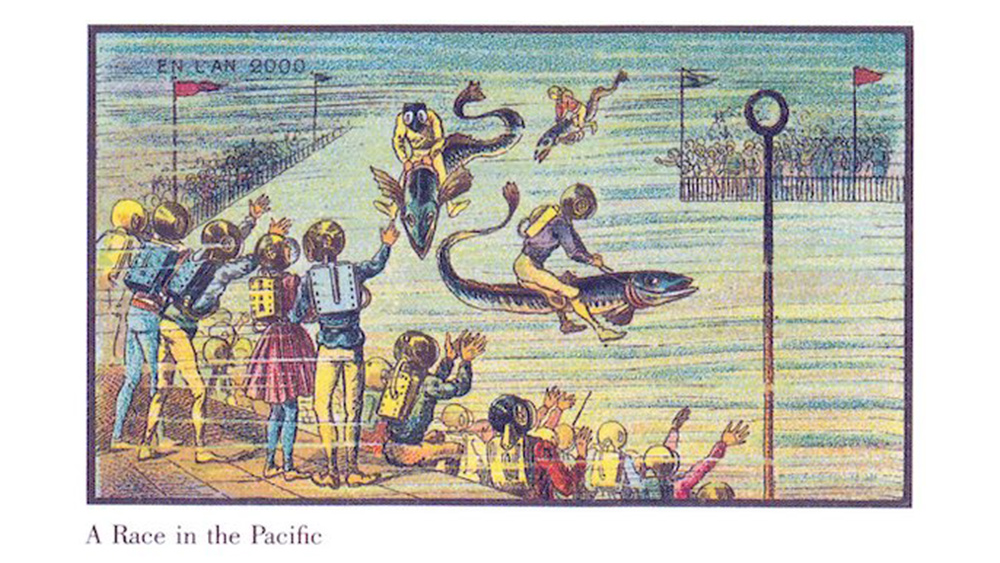
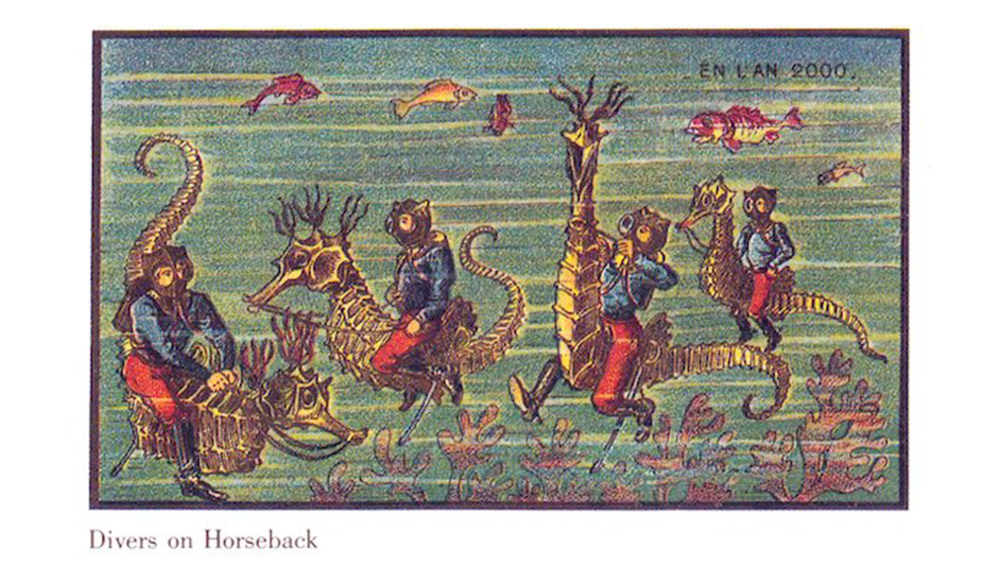
Of course, underwater life would require new forms of entertainment, hence fish racing and – er – sea horse riding. We can only assume the artists were also predicting the advent of the kind of genetic modification that would allow us to be able to engineer seahorses large enough to be ridden. While most of their underwater fantasies were way off the mark, it is true that scuba diving has become a big form of recreation since these paintings were made, and there's even now an underwater museum in Cancún.
The France in the 21st Century paintings apparently never made it to the cigarette packets they were created for, but they were later turned into postcards and included in Isaac Asimov's book Futuredays: A Nineteenth Century Vision of the Year 2000, which is available on Amazon. You can also find many of the paintings on Wikimedia Commons.
Some of the artists' predictions remain the stuff of wild fantasy, and many were probably created for amusement rather than serious futurology. However, they provide a fascinating insight into how people imagined we'd be living today, and how far things have actually evolved.
Inspired to depict your own ideas of what life could be like 100 years from now? Stock up with our essential art supplies for painting and take a look at our pick of the best sketchbooks for artists.
Read more:

Thank you for reading 5 articles this month* Join now for unlimited access
Enjoy your first month for just £1 / $1 / €1
*Read 5 free articles per month without a subscription

Join now for unlimited access
Try first month for just £1 / $1 / €1

Joe is a regular freelance journalist and editor at Creative Bloq. He writes news, features and buying guides and keeps track of the best equipment and software for creatives, from video editing programs to monitors and accessories. A veteran news writer and photographer, he now works as a project manager at the London and Buenos Aires-based design, production and branding agency Hermana Creatives. There he manages a team of designers, photographers and video editors who specialise in producing visual content and design assets for the hospitality sector. He also dances Argentine tango.
